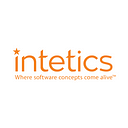Virtual Learning Environment by Intetics Implements Adaptive Learning Approach in Schools in South Africa
Objective
To create a virtual learning environment — a diagnostic assessment software that enables teachers to identify student-specific weaknesses and build an adaptive personalized learning course.
Challenge
Intetics’ client Modlin Education Solutions — the world’s leading education software provider — came up with an idea to create and implement a virtual learning platform for schools in South Africa. The platform was intended to enhance learning and advance the adoption of personalized learning.
The client had a unique algorithm of building the adaptive education course in scope of the K-12 education program based on the student’s strengths and weaknesses. It should unveil student education weaknesses and create a customized learning path to remedy them. The main challenge was an efficient implementation of this algorithm across target mobile and desktop platforms. The platform should compatible with an outdated hardware often available in schools as well as efficiently operate at slow internet speed.
The learning environment needed to have different levels of access to be used by administrators, teachers, content creators, and students. The usability was one of the critical success factors so that the students of all ages can easily use the software to accelerate learning, track their performance and keep teachers aware of their progress.
Intetics was selected by Modlin Education to address these challenges.
Solution
To accomplish the business objective and ensure the continuous process of students’ learning, knowledge assessment and implementation of adaptive learning at African schools, Intetics created a cross-platform mobile (IOs/Android) and desktop (Windows/Mac) application that relied on the unique method of machine learning and data processing.
A specially developed process of metadata exchange allowed avoiding the risks of network loss or poor connection with servers. The application could download the required education content and store it locally on a device so that the solution can work in offline mode. The interactions with servers were minimized to decrease the risk of information loss and ensure a nonstop educational process.
The application was developed for mobile platforms as well as for desktops to target most of the user’s devices. It allowed students using interactive learning materials, test exercises and download individually assigned materials. When the connection was available the application synchronized students’ activities with the server and recorded the progress. Different reports were developed for teachers and supervisors to analyze individual performance and help individual students.
The platform was implemented using cross-platform technology to minimize the development time frames and costs. This allowed sharing the same source code and business logic between the desktop, mobile and server applications and build a stable and consistent solution in a short period of time.
Results
Today the platform is successfully used in schools as a supplementary e-learning tool. Based on the diagnostic assessment results the software identifies student-specific weaknesses and builds an adaptive personalized learning path to remedy them.
